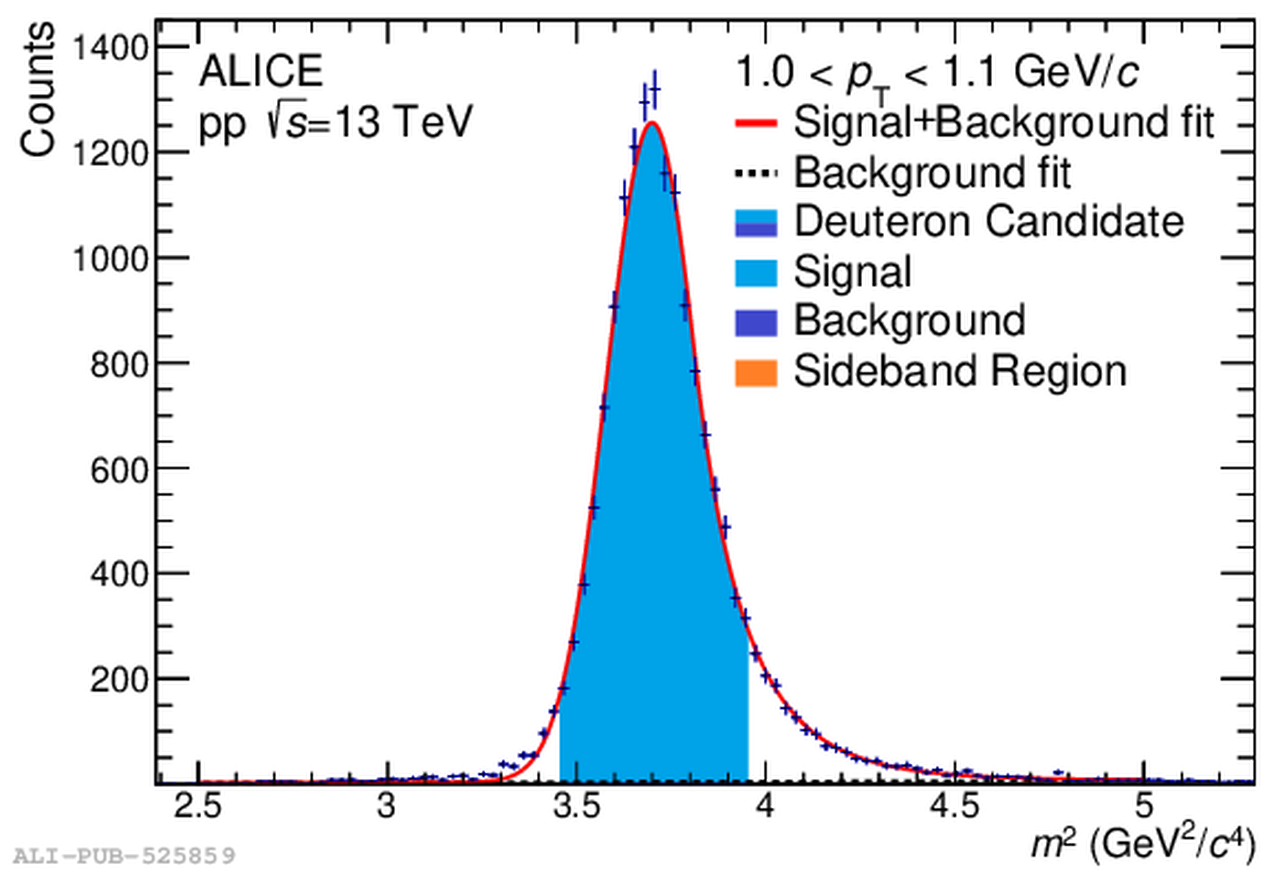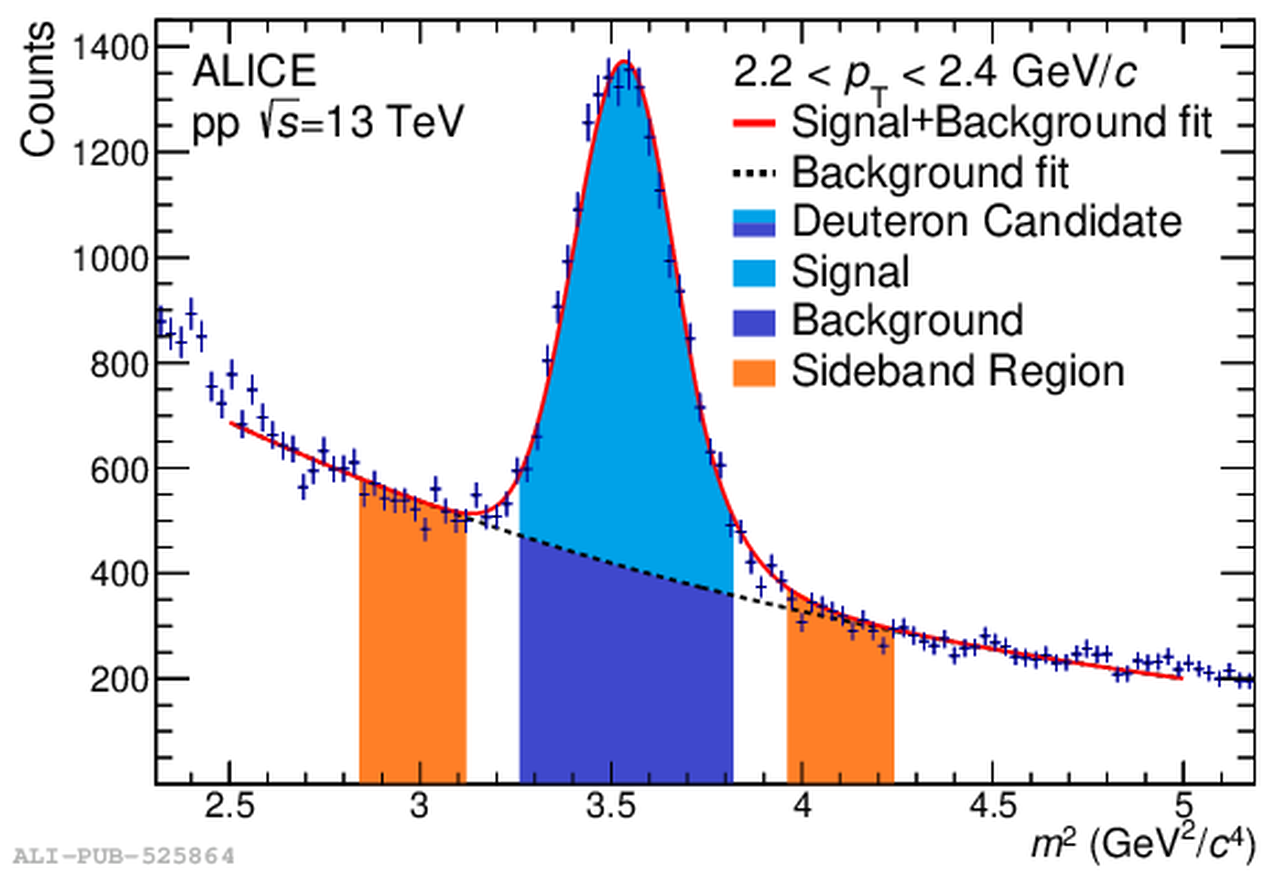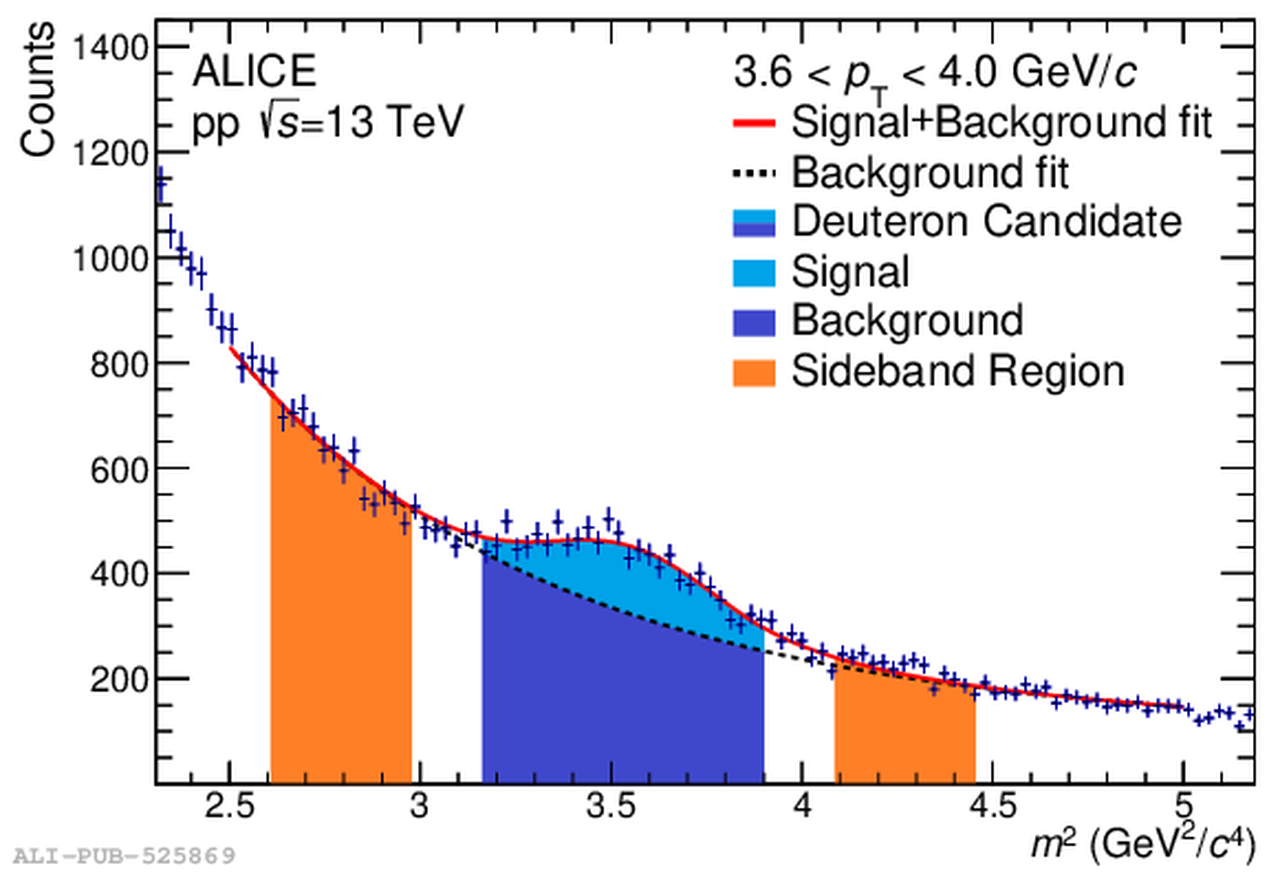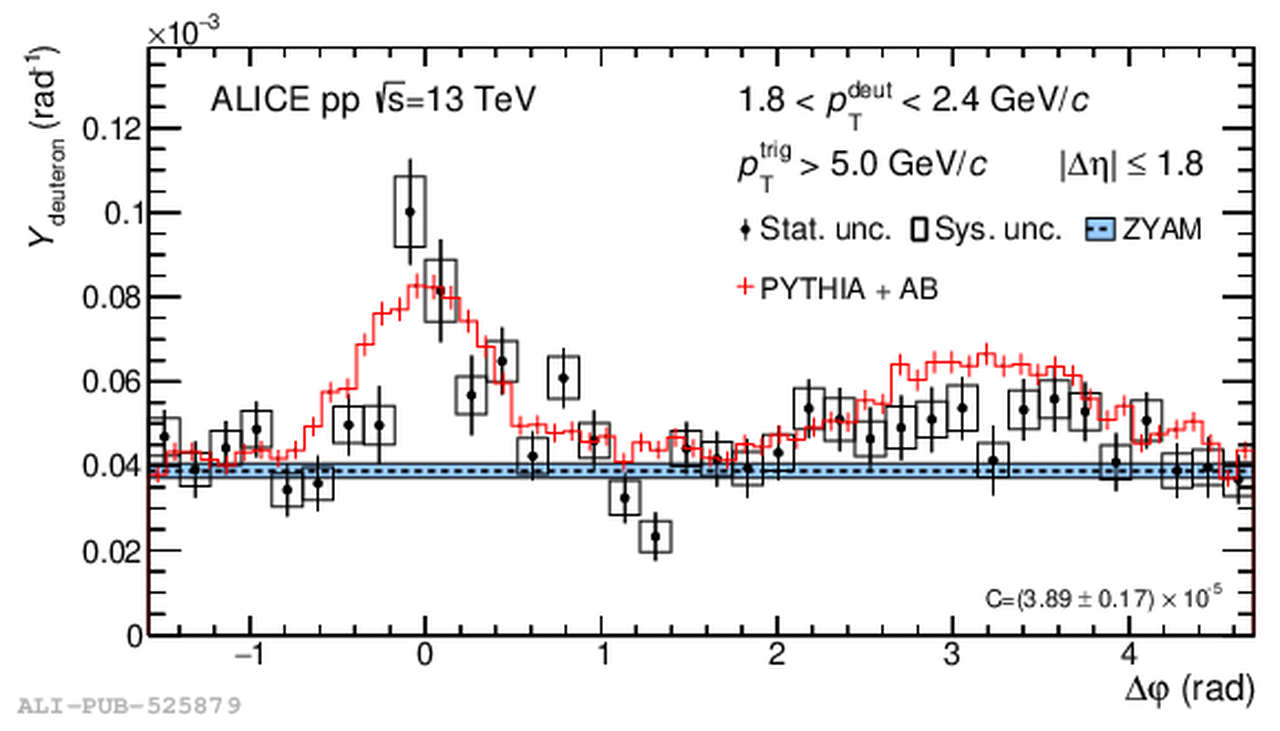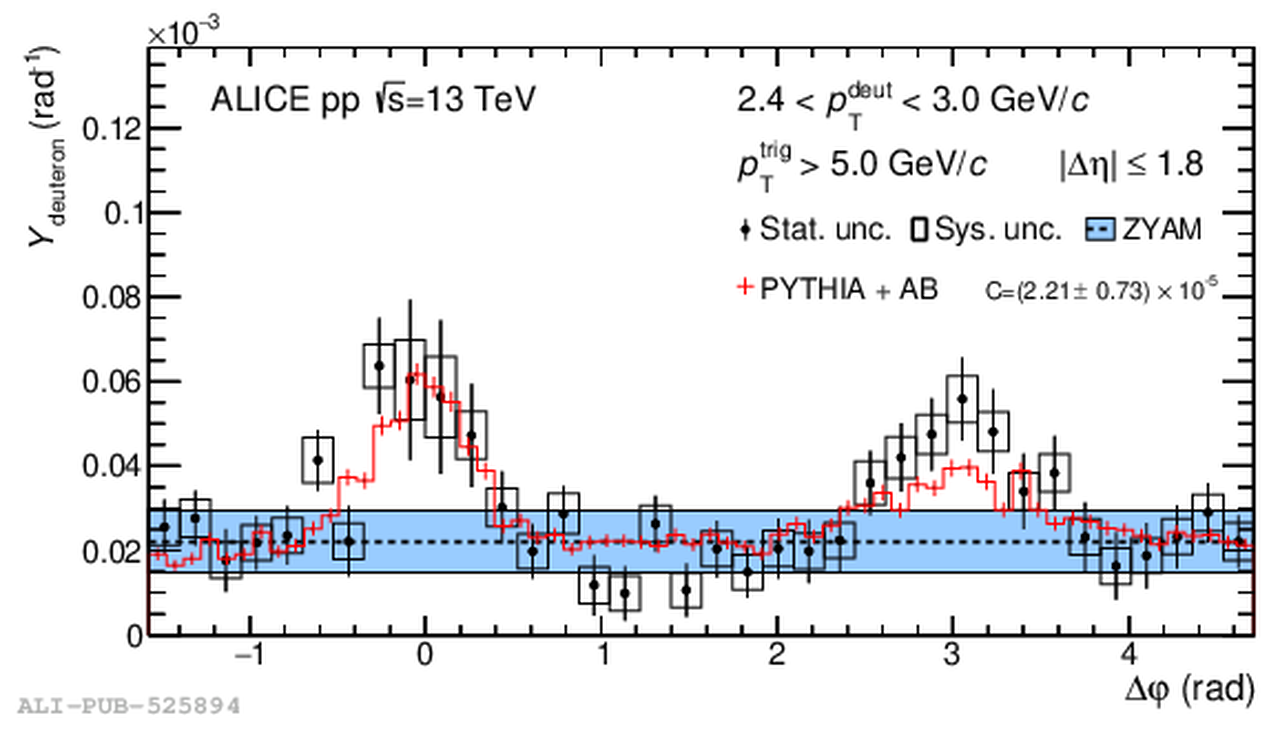Deuteron production in high-energy collisions is sensitive to the space-time evolution of the collision system, and is typically described by a coalescence mechanism. For the first time, we present results on jet-associated deuteron production in \pp\ collisions at $\sqrt{s}=13$ TeV, providing an opportunity to test the established picture for deuteron production in events with a hard scattering. Using a trigger particle with high transverse-momentum ($p_{\rm T}>5$ GeV/$c$) as a proxy for the presence of a jet at midrapidity, we observe a measurable population of deuterons being produced around the jet proxy. The associated deuteron yield measured in a narrow angular range around the trigger particle differs by 2.4-4.8 standard deviations from the uncorrelated background. The data are described by PYTHIA model calculations featuring baryon coalescence.
Phys. Lett. B 819 (2021) 136440
HEP Data
e-Print: arXiv:2011.05898 | PDF | inSPIRE
CERN-EP-2020-210
Figure group

